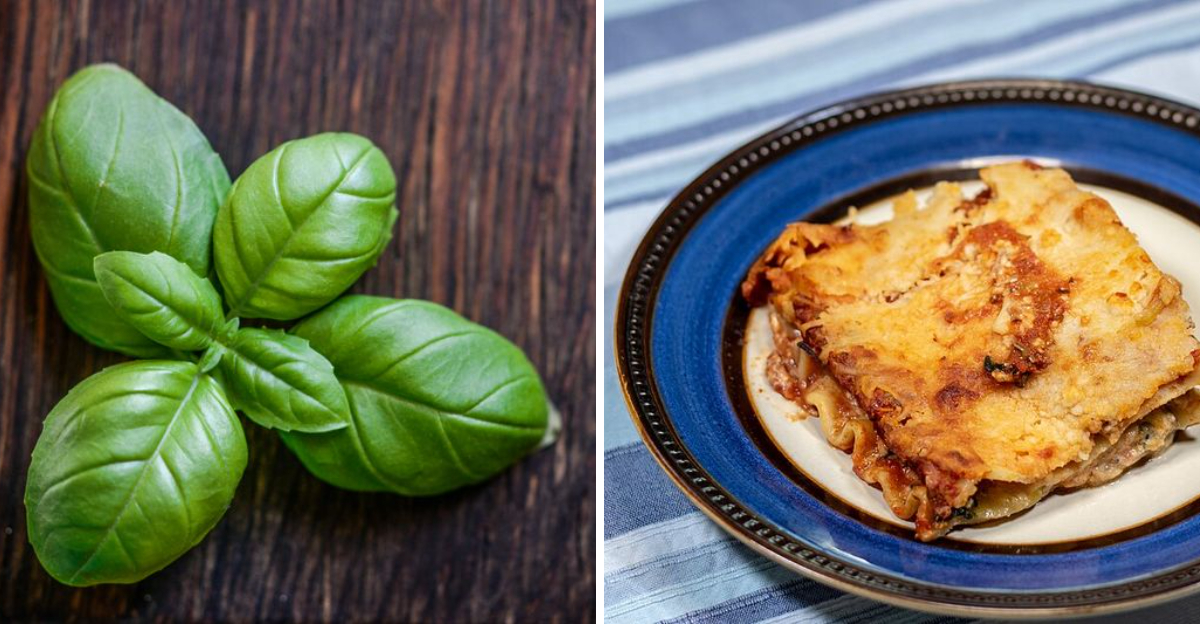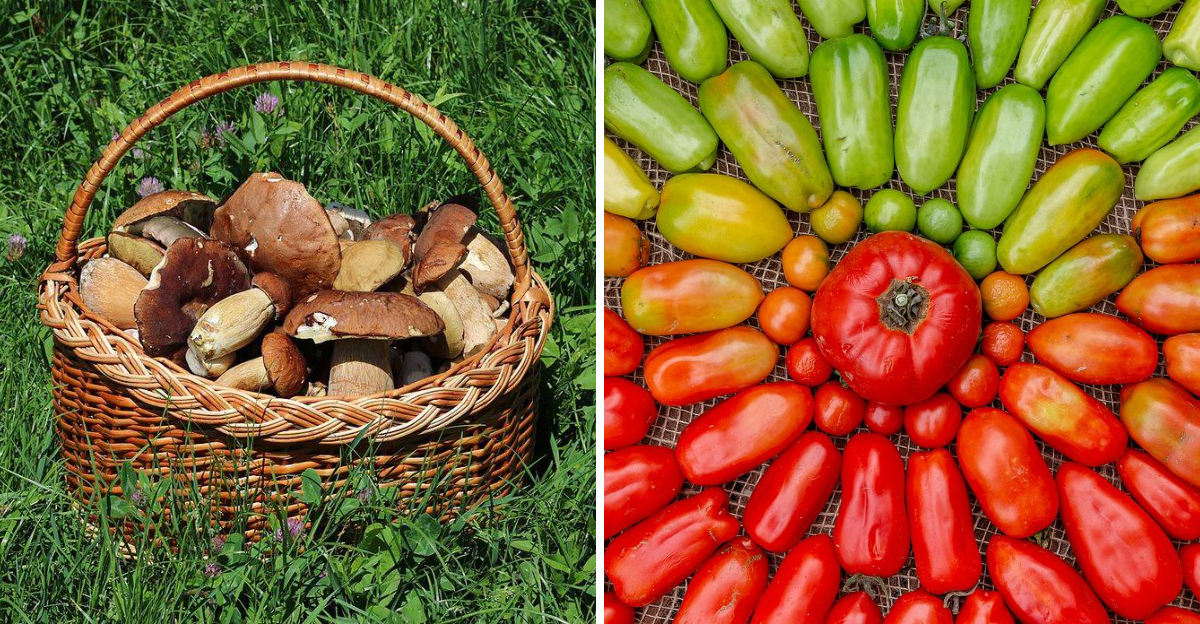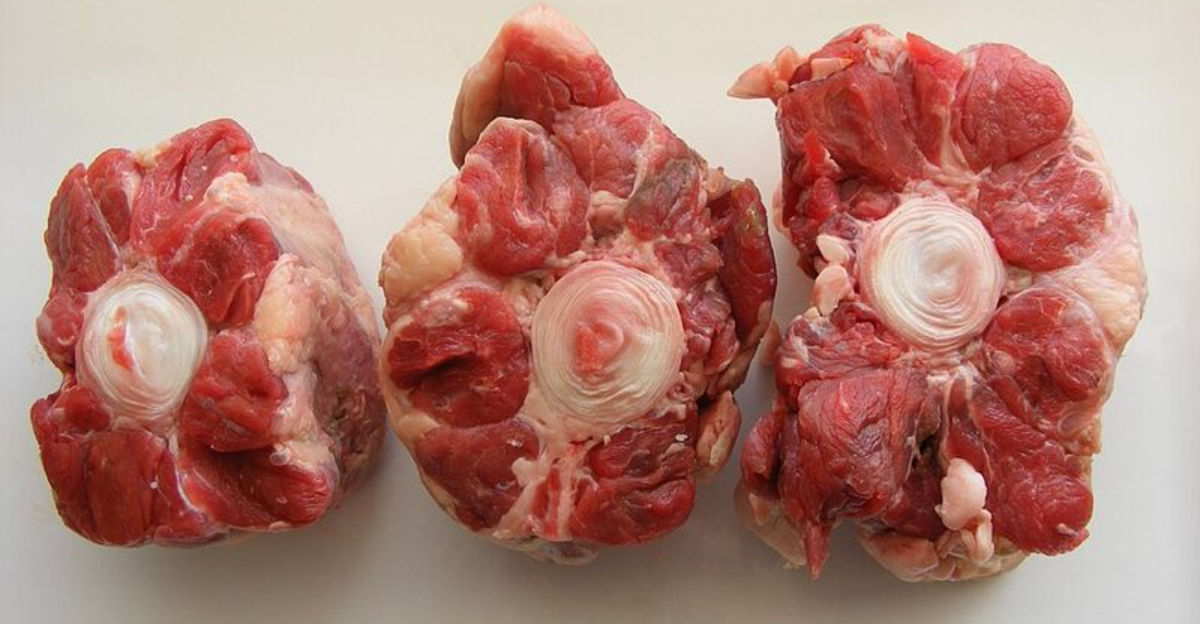30 Kitchen Errors That Quietly Turn Dinner Into A Danger Zone
Your kitchen might look clean and organized, but hidden dangers lurk in everyday cooking habits that could make your family sick.
Many home cooks unknowingly make mistakes that invite bacteria, toxins, and foodborne illnesses right onto the dinner table.
Understanding what you’re doing wrong can protect everyone you love from unnecessary health risks and keep mealtimes safe and enjoyable.
1. Undercooked Chicken

Biting into juicy chicken sounds delicious until you realize pink meat means dangerous bacteria are still alive and kicking. Salmonella and Campylobacter thrive in undercooked poultry, causing severe stomach cramps, fever, and worse.
Always use a meat thermometer to check that chicken reaches 165°F internally. Don’t rely on color alone because sometimes cooked meat stays slightly pink near the bone, but temperature never lies.
2. Washing Raw Poultry

Rinsing chicken before cooking seems like a smart hygiene move, but it actually spreads germs everywhere. Water droplets carry bacteria across your sink, counter, and even onto nearby dishes or food.
Cooking kills all the bacteria you’re worried about, so skip the rinse entirely. Just pat the poultry dry with paper towels and toss them straight into the trash to avoid contamination.
3. Reusing Marinades

Brushing leftover marinade onto grilled meat feels like adding extra flavor, but you’re actually painting raw meat juices back onto cooked food. Bacteria from uncooked proteins contaminate the marinade and survive if not properly heated.
If you want to use marinade as a sauce, boil it for several minutes first. Better yet, set aside a separate portion before adding raw meat to keep things truly safe.
4. Leaving Food Out Too Long

Potluck dinners and lazy Sunday brunches often mean food sits out while everyone mingles and munches. Bacteria multiply rapidly between 40°F and 140°F, doubling every 20 minutes in the danger zone.
Refrigerate perishable foods within two hours, or just one hour if the room temperature exceeds 90°F. When hosting, use warming trays or ice baths to keep hot foods hot and cold foods cold throughout your event.
5. Cross-Contaminating Cutting Boards
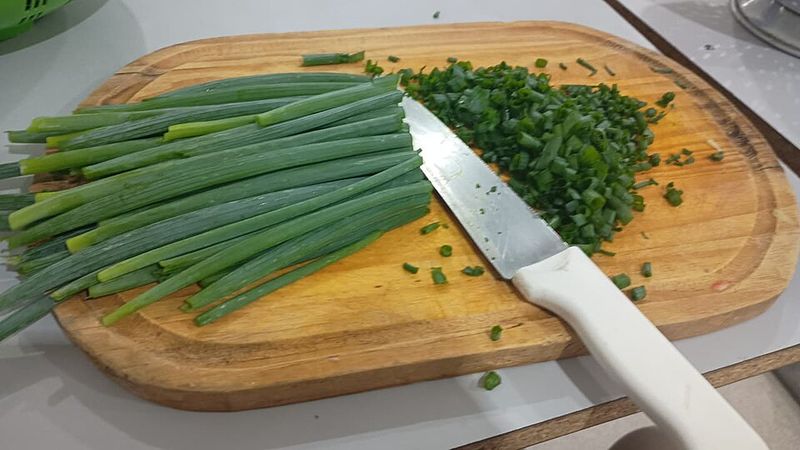
Chopping vegetables on the same board you just used for raw meat transfers invisible bacteria straight onto foods you’ll eat uncooked. Even a quick rinse doesn’t eliminate all the pathogens clinging to the board’s surface.
Designate separate cutting boards for raw meats and produce, or thoroughly wash boards with hot soapy water between uses. Color-coded boards make it easy to remember which is which during busy meal prep.
6. Using Cracked Eggs

Cracks in eggshells create highways for bacteria to sneak inside and contaminate the egg white and yolk. Salmonella loves hanging out on shells and slips through even tiny fractures you might not notice.
Inspect every egg before buying and again before cracking them into your bowl. Toss any with cracks, no matter how small, because the risk of illness isn’t worth saving a few cents on one egg.
7. Eating Raw Cookie Dough

Sneaking bites of cookie dough before baking is a beloved tradition, but raw flour and eggs both carry serious health risks. Flour can harbor E. coli from contaminated grain, while raw eggs may contain Salmonella.
Satisfy your cravings with specially made edible cookie dough that uses heat-treated flour and no eggs. Many brands now sell safe versions, or you can easily make your own at home without the worry.
8. Improperly Canning Foods
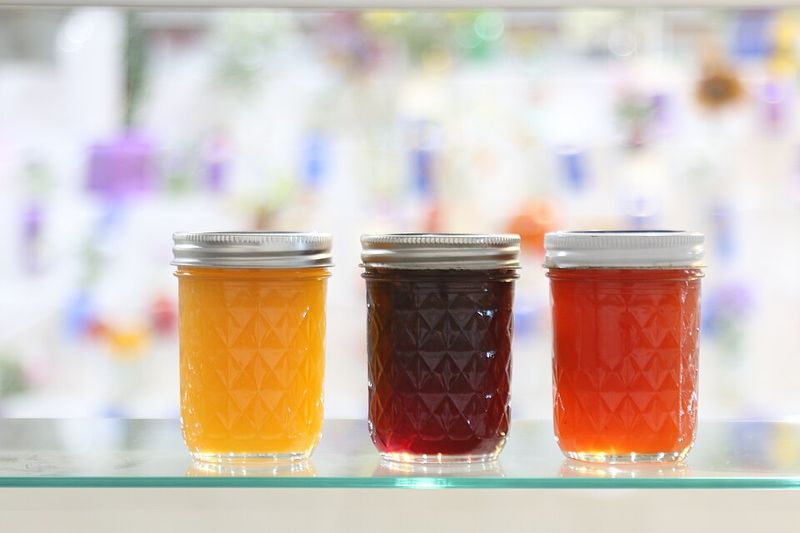
Home canning preserves summer’s bounty, but mistakes create the perfect environment for botulism, a deadly toxin that thrives in oxygen-free spaces. Low-acid foods like green beans require pressure canning, not just boiling water baths.
Always follow tested recipes from reliable sources and use proper equipment for each food type. Inspect jars for tight seals, and when in doubt, throw suspicious jars out without tasting the contents first.
9. Refreezing Thawed Meat
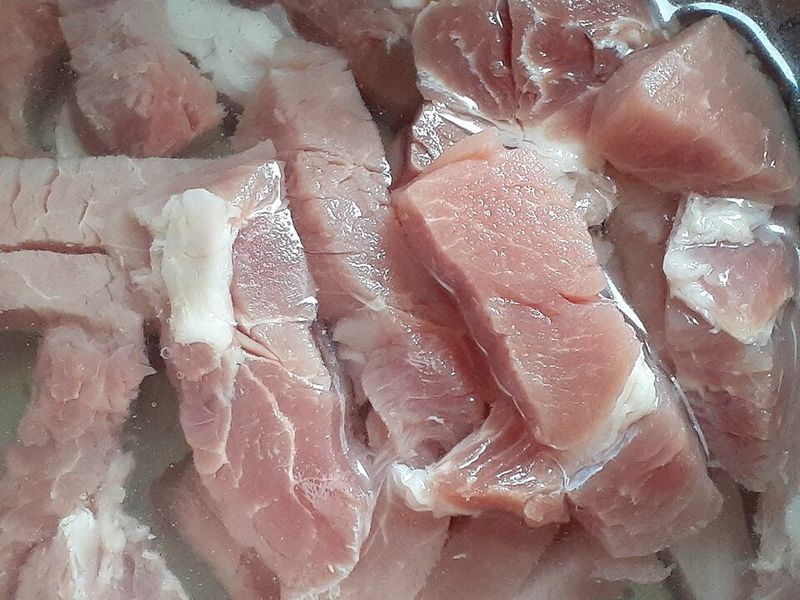
Meat that thawed on your counter or in the fridge loses quality and safety when refrozen without cooking first. Bacteria multiply during thawing, and refreezing doesn’t kill them, just puts them on pause until the next thaw.
Cook thawed meat before freezing it again, or plan your meals better to avoid waste. Meat thawed in the refrigerator stays safe for a day or two before you must cook or discard it entirely.
10. Undercooking Ground Beef
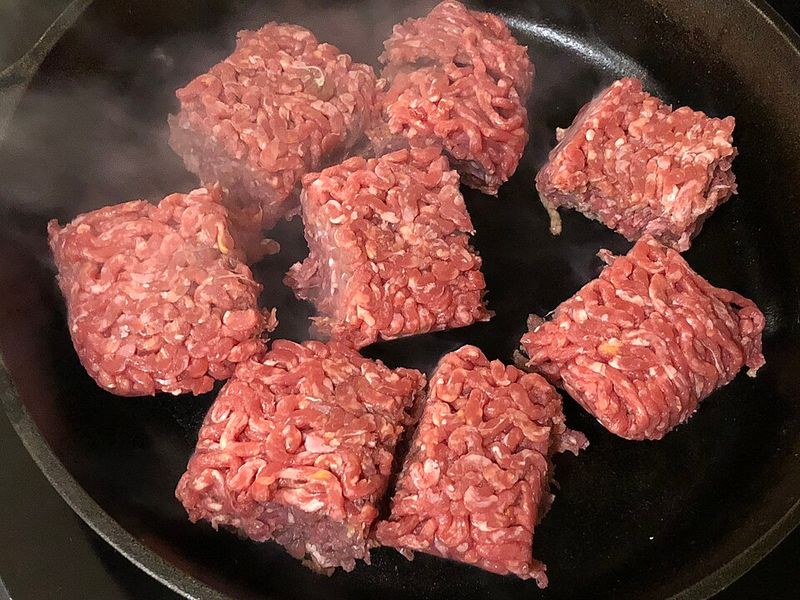
Rare steaks are delicious, but ground beef needs thorough cooking because bacteria from the meat’s surface gets mixed throughout during grinding. E. coli and other pathogens survive in pink, undercooked burger centers.
Cook ground beef to 160°F, checking with a thermometer inserted sideways into the patty. Color isn’t reliable since some beef stays pink even when fully cooked due to myoglobin reactions with heat and smoke.
11. Using Swollen Cans
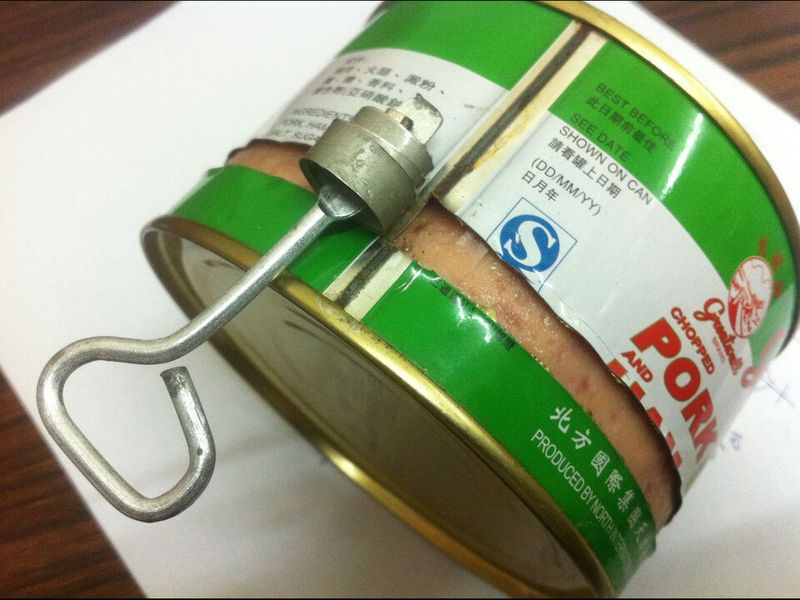
Bulging cans signal that bacteria inside are producing gas, and botulism is often the culprit behind the swelling. Opening and tasting the contents could land you in the hospital with paralysis or worse.
Discard any can that’s swollen, dented deeply, rusted, or leaking without opening it. Wrap it in plastic bags before throwing it away so curious pets or people don’t accidentally get exposed to the dangerous contents.
12. Not Washing Produce

Skipping the rinse on fruits and vegetables means eating pesticide residue, dirt, and bacteria that hitchhiked from the farm to your table. Even organic produce needs washing since soil contains natural pathogens.
Rinse all produce under running water, scrubbing firm items like potatoes and melons with a clean brush. Dry everything with a clean towel to remove any remaining bacteria that water loosened but didn’t wash away completely.
13. Tasting Spoiled Food

When leftovers smell funky, the nose-wrinkle test isn’t enough because some dangerous bacteria don’t produce obvious odors or visible mold. Just a tiny taste can deliver enough toxins to make you sick.
Trust expiration dates and your instincts about how long food has been sitting around. Tossing questionable food wastes a few dollars, but eating it could cost you days of misery or even a hospital visit that’s far more expensive.
14. Storing Hot Food In Plastic

Pouring steaming soup into plastic containers seems convenient, but heat causes some plastics to release chemicals into your food. BPA and other compounds leach out faster at high temperatures, contaminating what you’ll eat later.
Let hot food cool slightly before transferring it to storage containers, or invest in glass options that handle any temperature safely. Check that plastic containers are labeled microwave-safe if you plan to reheat food in them.
15. Thawing Meat On The Counter
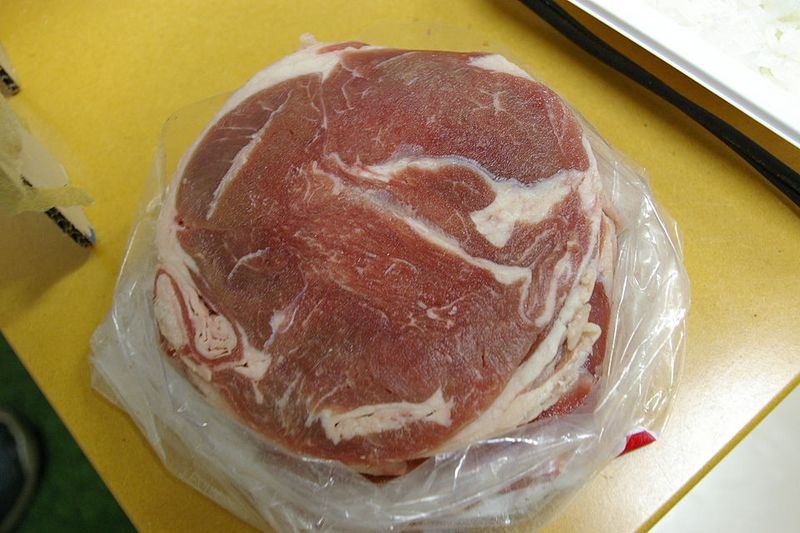
Defrosting meat on the counter saves time but creates a bacteria playground as the outer layers warm up while the inside stays frozen. Pathogens multiply rapidly in the temperature danger zone surrounding the still-frozen center.
Thaw meat in the refrigerator overnight, or use the microwave’s defrost setting if you’re in a rush. Submerging sealed packages in cold water works too, changing the water every 30 minutes to keep temperatures safe.
16. Eating Raw Sprouts

Sprouts seem super healthy, but the warm, humid conditions that help seeds sprout also create perfect conditions for bacteria like E. coli and Salmonella to flourish. Outbreaks linked to raw sprouts happen regularly across the country.
Cook sprouts thoroughly before eating them, especially if you’re pregnant, elderly, or have a weakened immune system. If you grow your own, sanitize seeds properly and maintain clean growing conditions to minimize contamination risks.
17. Using Dirty Sponges

Kitchen sponges harbor more bacteria than toilet seats because they stay damp and touch raw meat juices, spoiled milk, and every other germ in your kitchen. Wiping counters with a dirty sponge spreads bacteria instead of cleaning them away.
Microwave damp sponges for two minutes daily to kill most germs, or run them through the dishwasher regularly. Replace sponges every week or two, and use paper towels for cleaning up raw meat spills to avoid cross-contamination.
18. Ignoring Expiration Dates
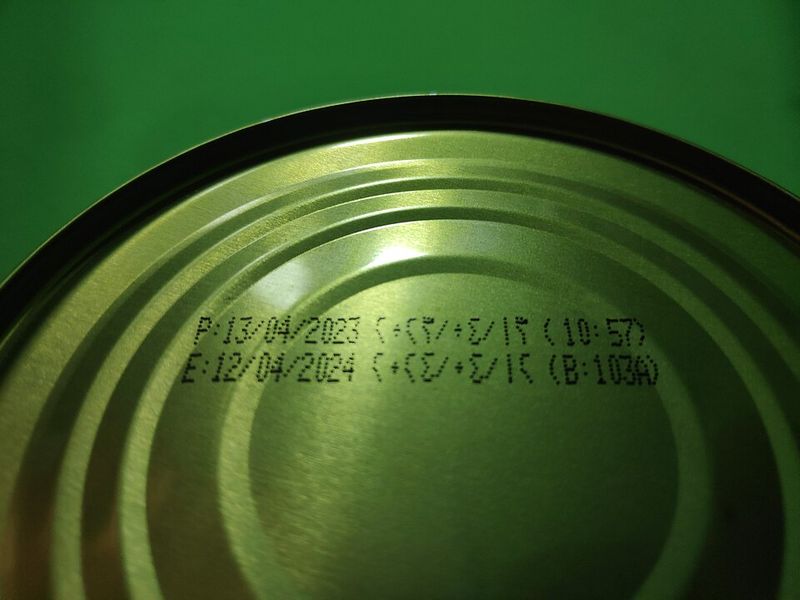
Expiration dates exist for good reasons, marking when food quality and safety start declining rapidly. Eating expired products increases your risk of food poisoning, even if everything looks and smells okay on the surface.
Check dates before buying groceries and regularly clean out your fridge to remove expired items. Organize shelves so older products sit in front where you’ll use them first, reducing waste while keeping your family safer from spoiled food.
19. Leaving Rice Out Overnight

Cooked rice contains Bacillus cereus spores that survive cooking and multiply quickly at room temperature, producing toxins that cause vomiting and diarrhea. Reheating doesn’t destroy the toxins once they’ve formed in the rice.
Refrigerate leftover rice within an hour of cooking, and reheat it to steaming hot only once. Toss rice that’s been sitting out for more than two hours, because the risk of illness far outweighs the cost of cooking a fresh batch.
20. Eating Dented Canned Goods
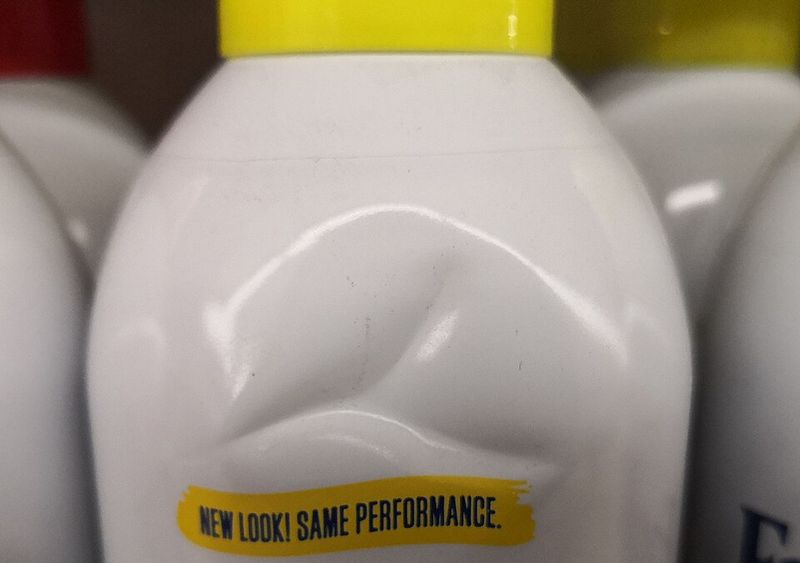
Dents along can seams compromise the seal that keeps bacteria out, potentially allowing botulism spores to contaminate the contents. Even small dents can create invisible holes where air and germs sneak inside over time.
Inspect cans carefully before purchasing, avoiding any with dents near seals or sharp creases anywhere on the surface. Small dents on flat sides are usually safe, but when in doubt, choose an undamaged can to guarantee your family’s safety at dinner.
21. Mishandling Leftovers

Leftovers become science experiments when stored too long or reheated improperly, growing bacteria that cause food poisoning. Many people forget when they cooked something, letting containers hide in the back of the fridge for weeks.
Label leftovers with dates and eat them within three to four days maximum. Reheat everything to 165°F, stirring to eliminate cold spots where bacteria survive, and never reheat the same food more than once to minimize risk.
22. Using Unpasteurized Dairy

Raw milk enthusiasts claim health benefits, but unpasteurized dairy products carry dangerous bacteria like Listeria, Salmonella, and E. coli that pasteurization eliminates. Pregnant women, children, and elderly people face especially high risks from contaminated raw milk.
Stick with pasteurized dairy products from the grocery store to protect your family from preventable illnesses. If you buy cheese, ensure it’s made from pasteurized milk or aged at least 60 days to reduce bacterial counts naturally.
23. Improper Pickling
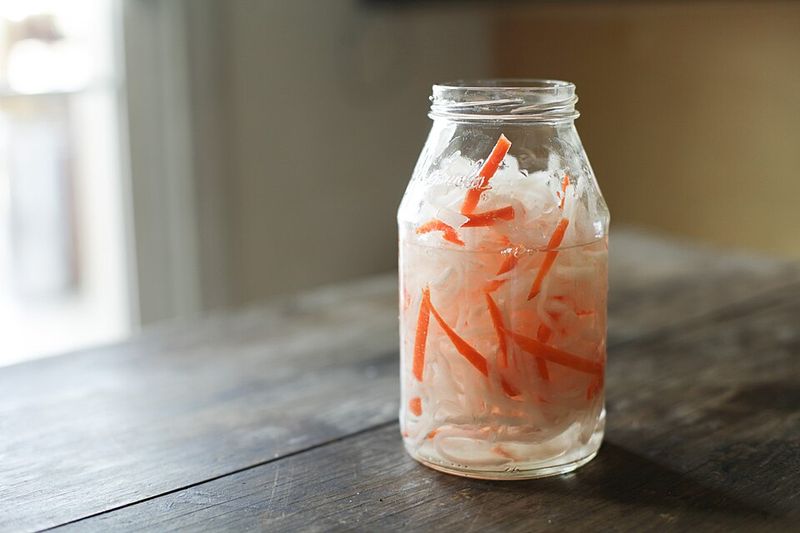
Pickling seems simple, but using too little vinegar or incorrect processing times creates conditions where botulism toxin can develop in your pretty jars. Low-acid vegetables need proper acidification or pressure canning to stay safe.
Follow tested recipes exactly, measuring ingredients carefully and processing jars according to directions. Check pH levels if you’re experimenting with recipes, ensuring everything stays below 4.6 to prevent botulism growth in your homemade pickles and preserves.
24. Eating Raw Flour
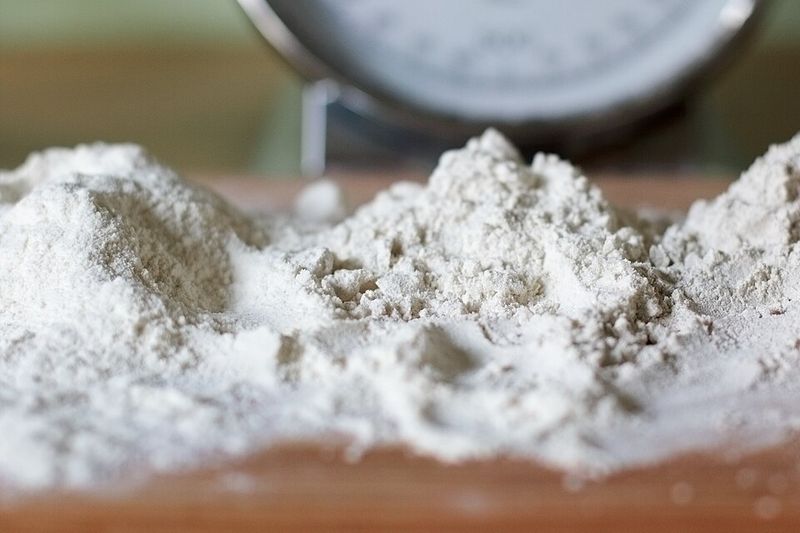
Flour looks harmless sitting in your pantry, but it’s a raw agricultural product that can harbor E. coli from contaminated wheat. Several outbreaks have been traced to people eating raw dough or batter containing untreated flour.
Bake anything containing flour thoroughly before eating it, and resist licking batter-covered spoons. You can heat-treat flour at home by spreading it on a baking sheet and heating it to 160°F for several minutes before using it in no-bake recipes.
25. Overstuffing The Fridge

Cramming every shelf full of groceries blocks cold air from circulating properly, creating warm spots where bacteria multiply faster. Your fridge works harder but can’t maintain safe temperatures throughout when air can’t flow freely around food.
Leave space between items so cold air reaches everything evenly, and don’t block vents with large containers. Check your fridge temperature regularly with a thermometer, ensuring it stays at 40°F or below to keep food safely chilled.
26. Not Washing Hands

Hands touch everything from doorknobs to phones to pets, collecting germs that transfer straight into food when you start cooking. Skipping handwashing is the easiest way to contaminate dinner with bacteria, viruses, and other nasty pathogens.
Scrub hands with soap and warm water for at least 20 seconds before handling food and after touching raw meat, eggs, or anything potentially contaminated. Sing the alphabet song twice to time yourself properly and ensure thorough cleaning.
27. Forgetting To Chill Desserts

Custards, cream pies, and other dairy-based desserts need refrigeration because bacteria love sugar and cream combinations sitting at room temperature. Leaving them out turns sweet treats into sources of food poisoning within hours.
Refrigerate desserts containing dairy, eggs, or cream fillings within two hours of making them. Transport chilled desserts in coolers with ice packs when bringing them to parties, and return leftovers to the fridge promptly after serving everyone.
28. Reheating Seafood Wrong
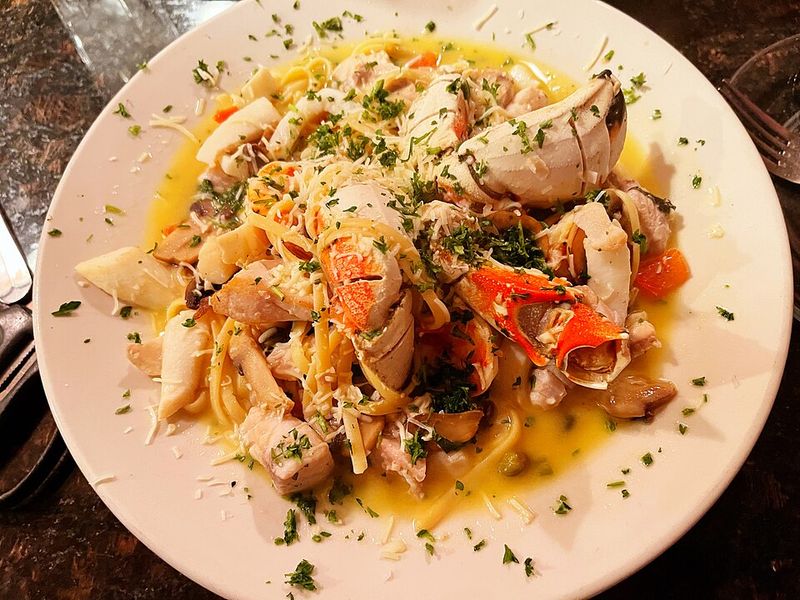
Seafood deteriorates faster than other proteins, and improper reheating allows bacteria to survive in cold spots while other parts dry out. Fish and shellfish also develop unpleasant textures and flavors when reheated multiple times or at incorrect temperatures.
Reheat seafood just once to 165°F, using a food thermometer to verify the temperature throughout. Add a splash of liquid to prevent drying, and eat reheated seafood immediately rather than letting it sit around growing more bacteria.
29. Using Old Cooking Oil

Cooking oil breaks down with repeated heating, forming harmful compounds that taste bad and may increase health risks. Rancid oil develops off-flavors and produces smoke at lower temperatures, ruining your food while potentially creating toxic substances.
Change frying oil after several uses or when it darkens, smells off, or smokes at normal cooking temperatures. Strain cooled oil between uses to remove food particles that accelerate breakdown, and store it properly in a cool, dark place when not cooking.
30. Undercooking Eggs
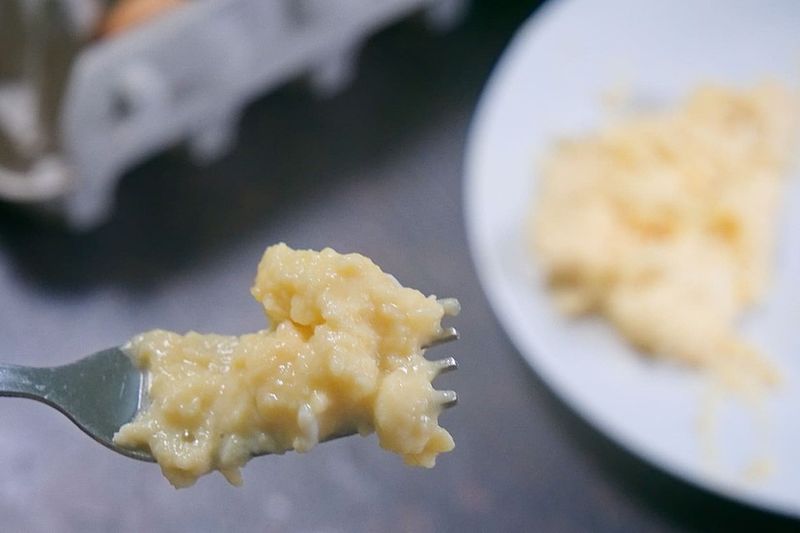
Runny eggs taste delicious but carry Salmonella risks, especially for young children, pregnant women, and anyone with weakened immunity. Bacteria hide inside eggs, not just on shells, surviving in yolks and whites that don’t reach safe temperatures.
Cook eggs until both whites and yolks are firm, or use pasteurized eggs for recipes requiring raw or undercooked eggs. Scrambled eggs should be cooked until no visible liquid egg remains, reaching 160°F throughout to eliminate any potential pathogens completely.

